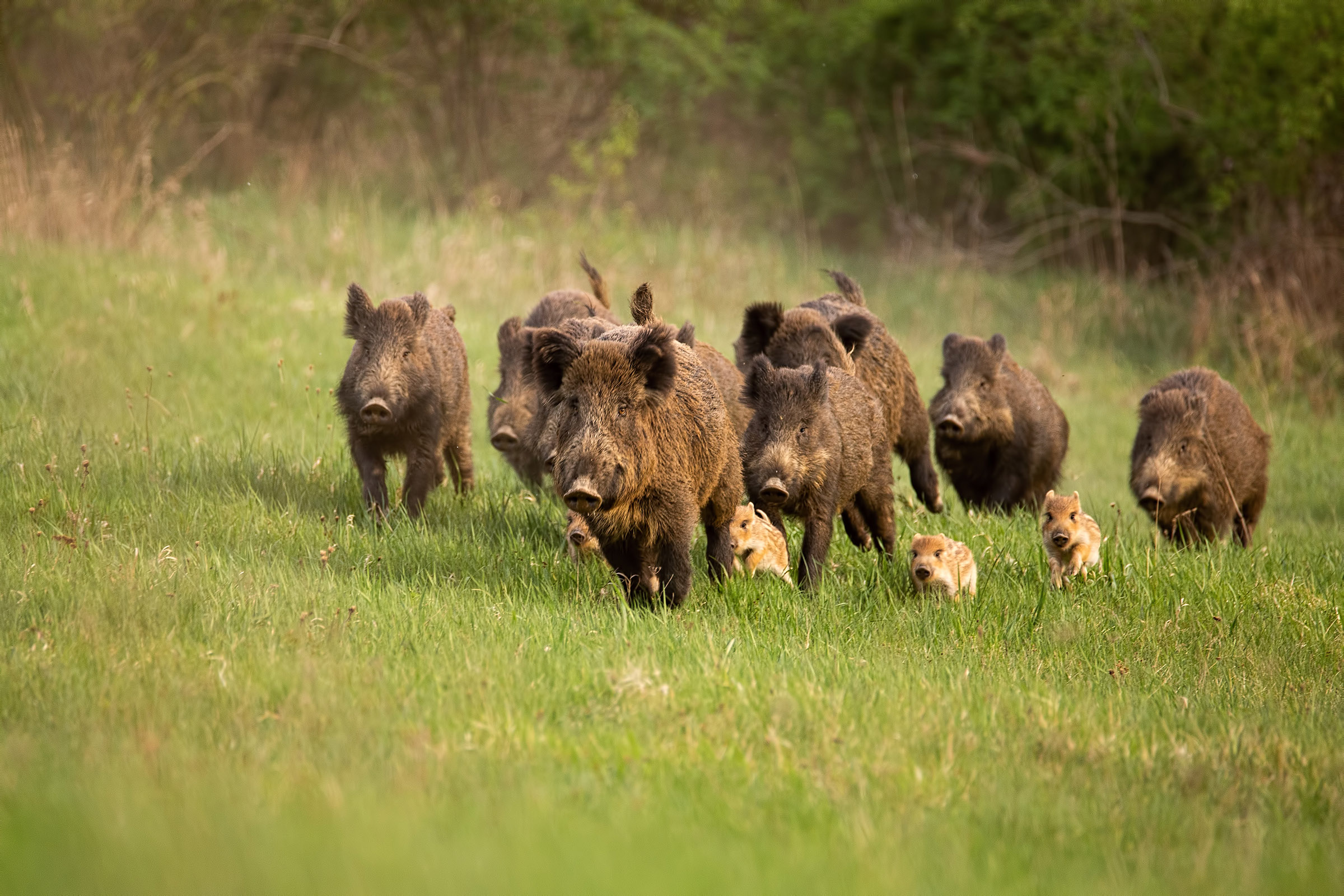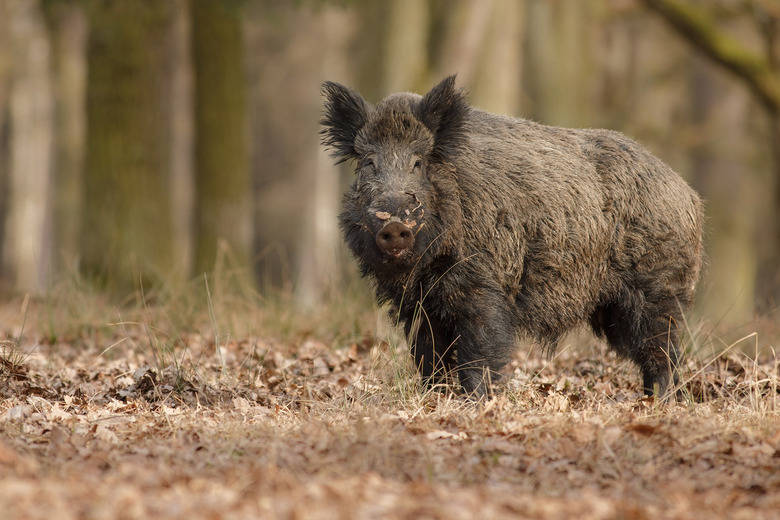Hybrid 'Super Pigs' Are Invading The US After Running Wild In Canada
A hybrid cross between wild boars and domestic pigs are invading the United States. These "super pigs," which first spread through Canada are now making their way down into the northern U.S. While it isn't unusual for animals to cross national lines, the problem lies in the dangers that these feral swine pose to the ecosystem in the areas they are invading.
The root of the problem, according to a Field and Stream report comes from the early 2000s, when farms for wild boars loosed their hybrid super pigs after the market for farmed boars fell dramatically. The animals continued to breed and survive harsh weather conditions, giving rise to even more of the super pigs that they had been brought to Canada to create. In less than 20 years, the population has exploded.

As it stands, roughly 620,000 square miles in Canada is considered home to these wild super pigs, with more miles stretching into the United States as they move south. For native species in those areas, though, the issue is terrifying. That's because these wild hogs feed on anything. Not only will they take down whitetail deer, but they'll chow down on anything that crosses their path, including small birds.
While the population estimates aren't definitive, experts told Field and Stream that the issue is likely too far gone to eradicate the wild super pigs completely. Instead, Canada and the areas that the United States will need to find ways to mitigate the spread as much as possible. It's sure to be a difficult mission, but one that could prove the difference between life and death for some species in those areas.
Of course, seeing these wild super pigs moving south isn't unexpected. Despite covering that much group, these invasive species always find ways to spread, especially as their population grows. Perhaps we can come up with ways to genetically slow them down, the same way that geneticists have created genetically modified mosquitoes to help cut down on those populations.
